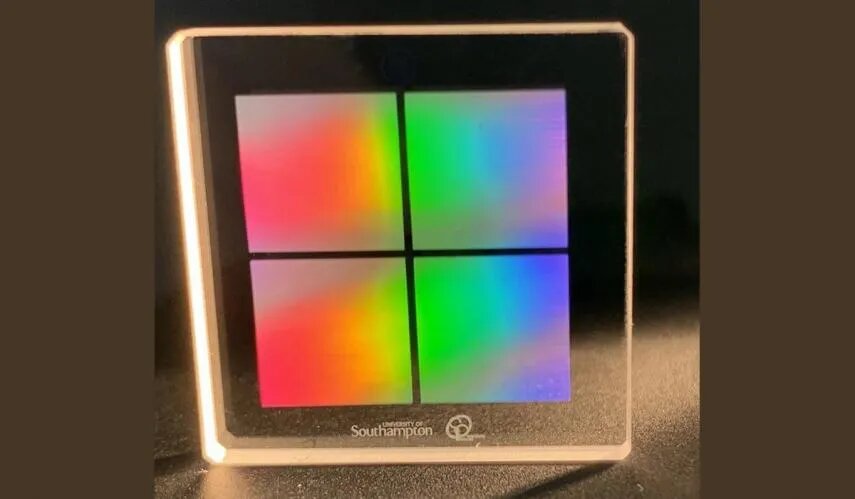Although we use the cloud and online storage a lot today, physical storage systems still make a lot of sense.
Today it may all revolve around streaming and online storage, but high-capacity external hard drives continue to sell non-stop.
Many users, and even more companies and institutions, need massive physical storage systems to store their personal content, backups, databases, etc.
The University of Southampton has developed a new optical storage system called 5D, which stores up to 500 TB of data in the size of a CD.
The University of Southampton has been developing this new standard for almost 8 years. Already in 2015 it presented the first version, but it was only allowed to store 300 KB, and it wrote at a slower speed.
5D is an optical storage system that uses a laser beam to write data to a crystal.
Unlike a Blu-ray disc or the like, which is vulnerable to heat, moisture, or magnets, the 5D storage glass does not have this problem. And it can survive eternally at room temperature.

It is called 5D because in addition to storing data in three-dimensional space, in three dimensions, it also stores the polarization and intensity of the laser.
The key is in the femtosecond laser, which emits very short, but very powerful, pulses of light at the nanoscale, according to New Atlas.
With this system, a large amount of information can be stored in very little space: up to 500 TB on a crystal CD, infinitely more durable than a conventional one.
But this 5D storage has two disadvantages that they have yet to fix: the read and write speed is very slow.
Using a new technique called Near Field Enhancement it has managed to reach 230 KB/s, which is very slow compared to a current hard drive or SSD, but enough to write text documents in real-time, or to store massive data (with much patience...).
Now they are investigating new techniques to increase this speed of reading and writing, as well as lower the costs of the laser, before launching the storage 5D to the market.
It will be a product-focused on storing massive data such as the census, museum catalogs, or DNA chains, for example.





